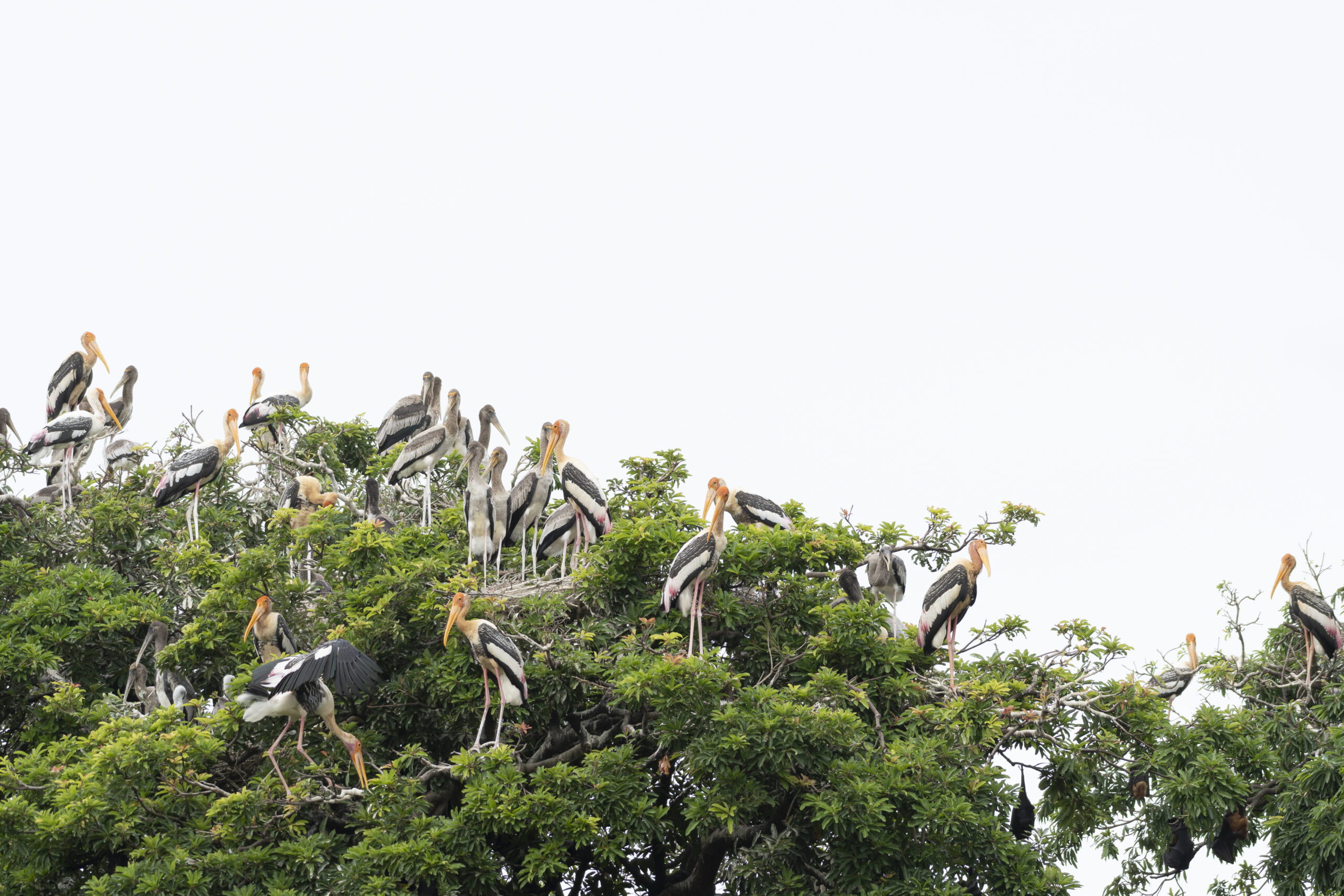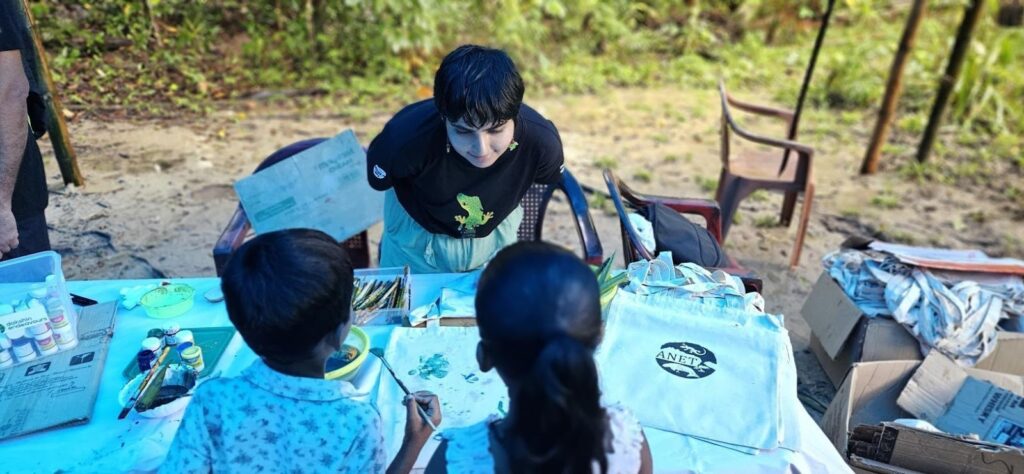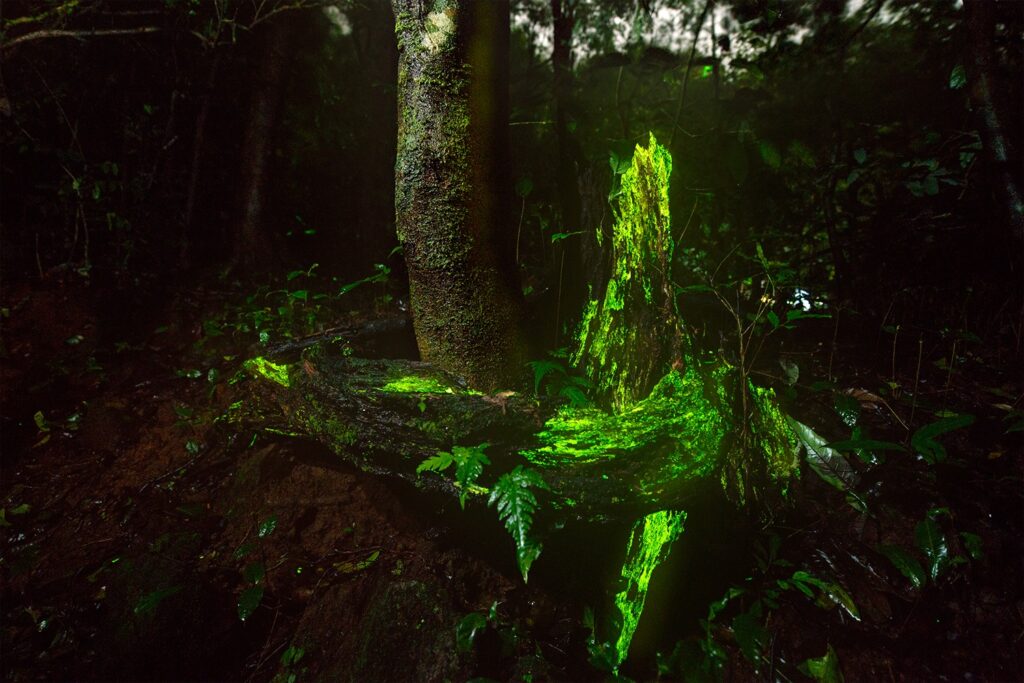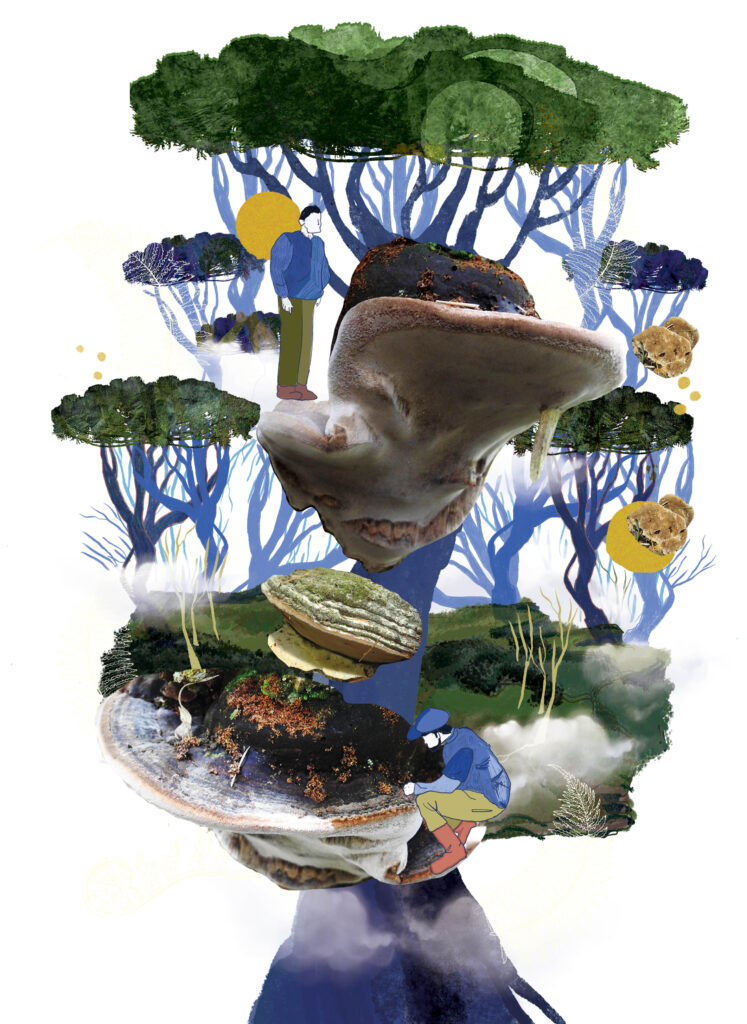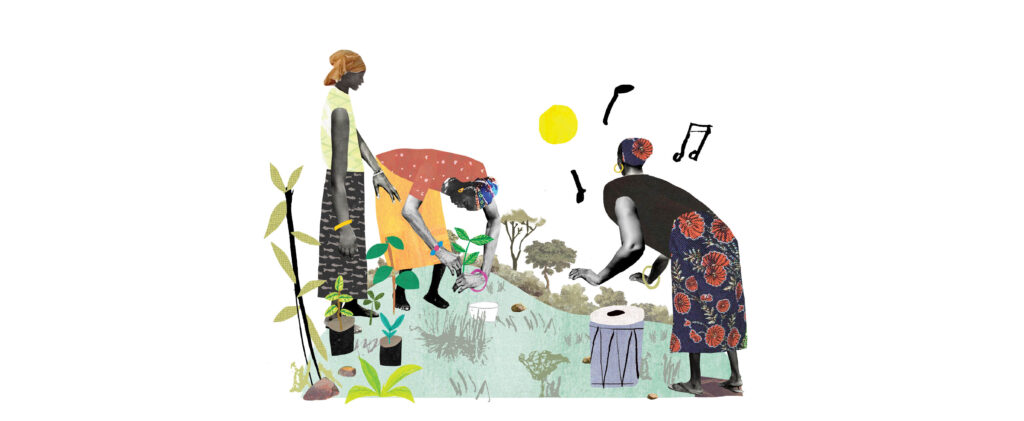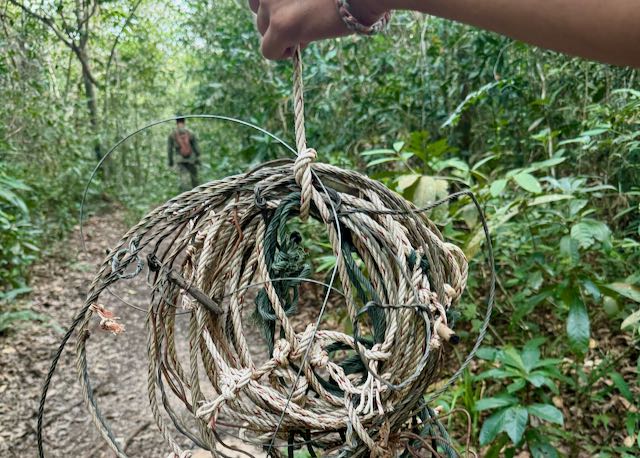Feature image: Painted storks roosting on a mahua tree inside the Thirupudaimaruthur Birds Conservation Reserve in Tamil Nadu, India
Last year, a team of three women—a sociologist, a field associate, and myself—set out to engage with the residents of Thirupudaimaruthur village, nestled along the banks of the Thamiraparani river in Tamil Nadu’s Tirunelveli district. The village is home to India’s first conservation reserve, the Thirupudaimaruthur Birds Conservation Reserve (TBCR). Thanks to the presence of tall, mature trees and availability of food from the river, the village is a popular nesting and roosting spot for wetland birds, such as painted storks, spot-billed pelicans, and egrets. These birds visit the village for several months each year, establishing a seasonal but deeply rooted ecological relationship with the landscape.
Our study, as part of the Ashoka Trust for Research in Ecology and the Environment-Agasthyamalai Community Conservation Centre (ATREE-ACCC), focused on examining the community’s relationship with these birds, perceiving their understanding of conservation, and assessing the feasibility of community-based ecotourism as a potential livelihood opportunity. This required not only structured interviews but also unstructured conversations, observations, and ongoing trust-building with the villagers.
Through our community engagement and observations, we found that for the villagers, conservation meant coexisting with birds and other life forms. They tolerated the strong smell of bird guano and had even given up hunting and the use of firecrackers for the well-being of the birds. They considered the birds a source of pride for the village, drawing researchers like us to their community, even though many villagers mistook them as ‘vellinattu paravai’ (foreign migratory birds).
I had assumed that, as women, our identities might make it easier to build trust with the villagers during fieldwork—and in many ways, that assumption turned out to be true. With the support of a few key community members, such as the gatekeeper of the village, the head and secretary of the panchayat (village council), and our field associate—who hailed from the region and had a few local connections—we were able to profile potential participants for interviews and discussions. Such local support proved invaluable and enabled us to ease into conversations.
We formally introduced ourselves to the village through a Self-Help Group meeting, a gathering primarily attended by women. This proved to be a pivotal access point. From the very beginning, the women were warm, curious, and generous with their time. Many were eager to share stories about their village, especially when we approached them during informal group settings. Most women rolled beedis (handmade cigarettes) for a living and typically worked outdoors in small, chatty groups under the shade of trees, in front yards, or on quiet street corners. These natural social settings became perfect sites for open, fluid conversations that offered us rich qualitative insights.
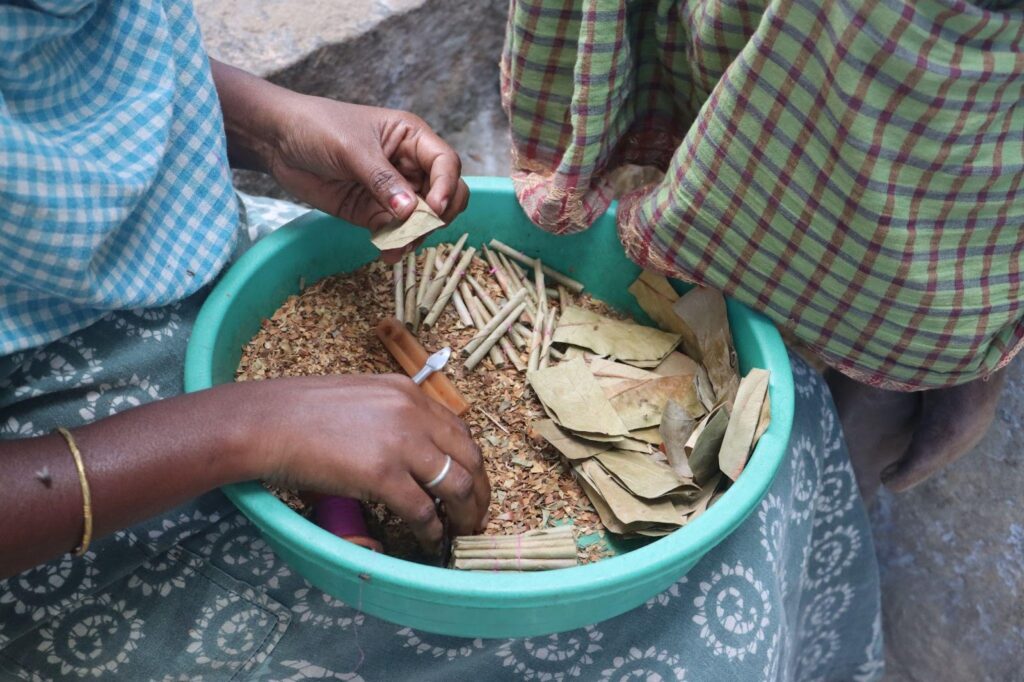
In contrast to the men in the village, the women were far more vocal about the everyday challenges their community faced. They spoke candidly about issues like water shortages during the rainy season, limited access to sanitation, and the lack of decent income-generating opportunities. Many women also expressed a genuine interest in being trained, and in taking ownership of community-based ecotourism initiatives.
Within a few weeks, we had completed interviews with nearly 50 percent of our target sample—most of them women. However, the next phase of recruiting and retaining male participants proved to be much more difficult.
We initially tried to contact the men in the village using phone numbers collected from the women. We had assumed that scheduling interviews with male family members through the women would be straightforward. However, this proved to be wrong. Most of the men worked in agriculture or traveled to nearby towns for daily-wage jobs. Attempts to reach them at home early in the morning rarely succeeded; many had already left for work, and some were reluctant to participate in an interview at that hour.
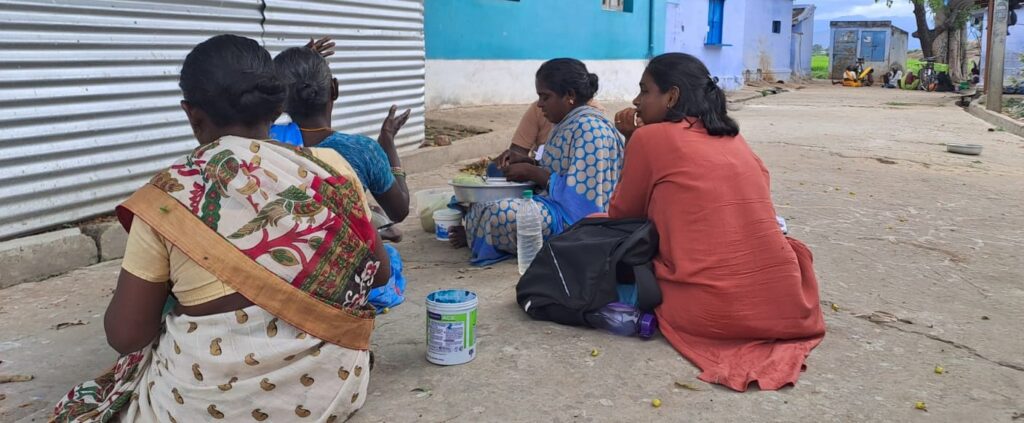
Eventually, we began frequenting the village’s only tea shop, a bustling morning gathering place for many men. They would stop by to sip tea, read the newspaper, and exchange banter before heading off to work. This became an ad hoc recruitment centre for us. We managed to speak to a few men, but the sampling was not representative as not all social groups equally shared that space.
To increase our outreach, we split into two teams. Since we were an odd-numbered group and I could converse in Tamil, I often worked alone. We began calling male participants ahead of time to schedule interviews more deliberately. That’s when we encountered another layer of complexity; many men were only available late in the evenings. And these time slots came with challenges as some men had a routine of drinking alcohol at night. I had to remain alert for signs of intoxication before starting any interviews. I still recall one particular evening when I had to prematurely end a conversation because the participant was visibly inebriated. Despite being accompanied by a colleague, I didn’t feel safe continuing the conversation.
Engaging young men between the ages of 18 and 30 turned out to be the most challenging part. Many from this age group were either disinterested, shy, or felt that they had little to contribute. A commonly heard refrain was, “My parents know more about the village, the birds, and the temple. You should speak with them instead.”
One young man in particular kept postponing his interview, offering a different excuse each time. Eventually, we had to drop him from the study. Curiously though, he ended up helping us recruit a few of his male friends, encouraging them to participate even as he remained firmly on the sidelines. While he declined to be interviewed, he seemed genuinely interested in listening in on his friend’s sessions.
Surprisingly, some male participants opened up more freely during joint interviews conducted alongside a female family member—usually their wife. The presence of a familiar person appeared to lower their inhibitions, making them more engaged and less guarded. Such incidents highlighted how social comfort and peer validation played subtle roles in male participation.
Even when male participants had confirmed appointments for Sundays, many were not at home when we arrived. Despite repeated follow-ups, the retention rate remained low. What we were able to accomplish with women in a few weeks stretched into months when it came to men. There were a few standout male participants, who spoke deeply about their lives. Some shared vivid childhood memories, such as crossing the river by foot or spending summers outdoors, while a few described working as lifeguards, helping save pilgrims who accidentally fell in the Thamiraparani river. These stories, filled with detail and emotion, added another layer to our understanding of how livelihoods and nature intersect in the village’s cultural fabric.
This gendered disparity in engagement revealed more than just logistical hurdles—it provided insights into the rhythms of daily life in Thirupudaimaruthur, and the differing degrees of availability, willingness, and trust among the villagers. It reminded us that participatory research is never just about asking the “right” questions. It’s about understanding social cues, finding the right moments, and sometimes, identifying the right person to ask them. By the end of our fieldwork, we had not only gathered data, but also witnessed the subtleties of participation, power, and perception.
